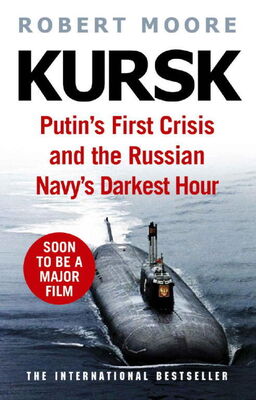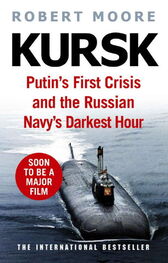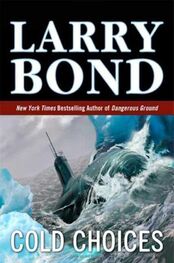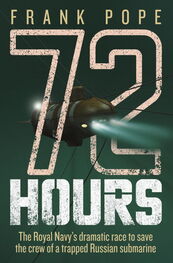Even if the AS-28 was a small submersible, not a nuclear-powered attack submarine, the rescue in Kamchatka was an impressive example of international naval cooperation. But late in 2017, on the other side of the world, there was a sharp reminder of the constant peril of routine submarine operations, and of the limitations of search-and-rescue capabilities.
With a crew of forty-four, the diesel-powered submarine ARA San Juan was two hundred miles off the coast of Argentina and making her way from the port of Ushuaia to her home base at Mar del Plata. The crew had reported on 15 November that sea water had leaked into the forward storage batteries. It had ignited a fire that was quickly extinguished, and the commanding officer signalled that the problem was resolved and the San Juan would continue her journey home for repairs.
An ominous silence followed. By 17 November, the alarm was raised that communication with the submarine had been lost. The days that followed were reminiscent of the emotional events that played out in Russia over the Kursk disaster. Family members of the San Juan sailors complained of misinformation, of being kept in the dark, and of having their hopes repeatedly raised and then dashed. Argentina’s defence ministry reported that there had been attempts at communications by the submarine crew using a satellite phone. That was later discredited.
The missing sailors’ wives and parents kept up an anguished vigil as they waited for news, pinning flags to a fence alongside the naval base. On 1 December, officials announced that there was no chance that the crew could still be alive. Argentina’s navy said that it was now a search for wreckage, not survivors. Relatives begged the rescuers to keep looking, refusing to accept that the San Juan was lost.
Analysis by specialists at the Comprehensive Nuclear Test Ban Treaty Organization (CTBTO) revealed two hydro-acoustic stations had detected ‘abnormalities’ consistent with an explosion. That anomaly was likely the sound of the giant pressures of the deep ocean crushing the German-built submarine. Among the sailors who were lost was Eliana Maria Krawczyk, Argentina’s first female submarine officer.
The loss of the San Juan was the most significant submarine disaster since the Kursk , and to Moscow’s credit, Russia responded with considerable resources to help Argentina locate the wreck. Its oceanographic vessel Yantar and various Russian submersibles were engaged in the multinational effort. When the US pulled back its rescue assets in January 2018, the Russians were still plying the lonely waters of the South Atlantic, looking for the needle in a haystack, in this case a diesel submarine seventy metres in length in a search zone that covered half a million square kilometres of wild ocean. ‘We definitely understand the grief of the submariners’ families,’ Putin noted with considerable understatement, no doubt recalling his own visceral experiences confronting the raw emotions of the Kursk families in Vidyaevo in August 2000.
With the passage of time, the wounds of the Kursk tragedy have begun to heal and the memories of that traumatic summer are receding. The Northern Fleet has benefited from an infusion of funds from Moscow and its prestige has been boosted by a successful projection of naval power into the Mediterranean during Russia’s intervention in the Syrian war. A new generation of highly capable Yasen-class attack submarines is being built. There are considerable fears in the US Navy that Russian torpedo advances are far outpacing American technology. Northern Fleet commanders also have a fresh strategic goal: to dominate the resource-rich Arctic waters to their north, which are likely to become ever more accessible and commercially valuable as global warming accelerates and the polar ice melts.
But the Kursk tragedy still sometimes emerges from the shadows to gnaw at Russia’s conscience. On 17 March 2009, the Russian journalist Tatyana Abramova visited a scrap metal merchant on the edge of Murmansk. She was taken aback by the sight that confronted her.
The command tower of the Kursk submarine, the main structure rising from the hull, stood there in the spring snow, rusting and neglected, the paint of the red and white double-headed Russian eagle faded, but still clearly visible. The most iconic and instantly recognizable part of the submarine, retrieved at such cost from the ocean floor, was being hawked for scrap metal.
Abramova’s articles, written in the newspaper Murmanskiy Vestnik , triggered widespread introspection about the legacy of the Kursk disaster. Why hadn’t the Russian state and the Northern Fleet saved and treasured this section of the submarine? How could the memory of the summer of 2000 fade so quickly? The Kremlin wanted to forget the Kursk , like it wanted to forget other mishaps, whether the Beslan school massacre or the Moscow theatre siege . As Abramova wrote, ‘The situation causes shame and anxiety because the indifference is deeper than the Barents Sea’.
Prodded by the negative headlines and the outrage of the local community, the admirals of the Northern Fleet finally found the funds and agreed to renovate the neglected command tower of the submarine and transform it into a memorial for the 118 lost souls of the Kursk . Today, with a fresh coat of paint, it sits next to the gold-domed Church of Our Saviour on the Water, overlooking the brutalist Soviet architecture of Murmansk. Just visible beyond is the choppy ice-free Barents Sea. The memorial lies 350 miles from the shipyard where the great submarine was built, and just a hundred miles from where her valiant sailors lost the only battle they ever fought.

The Kursk at her pier in the Arctic port of Vidyaevo.

The Kursk with some of her crew lined up along her casing. The Kursk was commissioned in 1995.
Both Associated Press

The garrison town of Vidyaevo, the home of the Kursk crew. Founded in 1968, the base faced steady decline throughout the 1990s.

Russian nuclear submarines at Vidyaevo’s naval docks, waiting to be defuelled and scrapped.
Associated Press

The Kursk ’s commanding officer, Captain 1st Rank Gennady Lyachin, reporting to Northern Fleet commanders on returning from his famous patrol to the Mediterranean in late 1999.
Press Association/EPA

Captain-Lieutenant Dmitri Kolesnikov and his wife, Olga, on the upper casing of the Kursk . In August 2000 he took charge in the aft section following the explosions.
Press Association/EPA

Kolesnikov ( centre ) with his fellow crewmen, including Rashid Ariapov ( back, far right ), Dmitri Murachev ( front left ) and Sergei Lybushkin ( back, far left ). Kolesnikov’s series of notes provided a dramatic glimpse into the unfolding tragedy.

Kolesnikov’s third and final note, recovered from his body and singed by the fire that roared through the ninth compartment. The end reads, ‘Regards to everybody, do not despair. Kolesnikov.’

The torpedo room of an Oscar II nuclear submarine. In an identical compartment of the Kursk , the disastrous chain of events of 12 August 2000, began.

The Northern Fleet’s main rescue ship the Rudnitsky launching Priz on Thursday, 17 August 2000, after the summer storm had finally abated. This was the last Russian attempt to reach survivors.
Associated Press ITAR-TASS

The Northern Fleet’s two submersibles, Priz ( left ) and AS-32, aboard the rescue ship the Rudnitsky . Only Priz might connect to the Kursk ’s escape hatch and bring trapped sailors to the surface.
Associated Press ITAR-TASS

Admiral Viacheslav Popov, commander of the Northern Fleet, with his trademark cigarette holder. After a brilliant career as a submarine captain he faced his greatest test of leadership in August 2000.
Associated Press

Two Russian specialists examining the emergency hatch on one of the Kursk ’s sister submarines. This upper hatch leads into an escape tower and down into the ninth compartment.
Press Association/EPA

The Seaway Eagle , an offshore diving vessel, was at the centre of the British and Norwegian rescue attempt.
Press Association/EPA

British and Norwegian saturation divers reached the hatch on Sunday, 20 August 2000, eight days after the disaster.
Popperfoto/Reuters

Relatives of the 118 Kursk submariners gathered in Vidyaevo.
Associated Press

Nadezhda Tylik, the mother of a Kursk officer, shouting at Russian leaders. Moments after this picture was taken, she was forcibly sedated and dragged from the meeting.
Press Association/EPA

Relatives of the Kursk sailors during a ceremony on the Barents Sea.
Popperfoto/Reuters

President Vladimir Putin at Vidyaevo’s Officers’ Club on the evening of 22 August 2000. He addressed the families of the Kursk crew members and endured hours of ferocious questioning.
Popperfoto/Reuters

The first bodies of the Kursk crew members arriving back in the Northern Fleet Headquarters of Severomorsk on 29 October 2000. On the top of the leading armoured personnel carrier is the coffin containing the body of Dmitri Kolesnikov.
Press Association/EPA

The sail of the Kursk emerging from the water in the dry-dock near Murmansk in October 2001.
Associated Press/EPA


The Kursk submarine in the Arctic port of Roslyakovo after the salvage operation in October 2001. Out of the water the submarine’s size becomes apparent.
ITAR-TASS and Press Association/EPA

Part of the recovered command tower of the Kursk is now a memorial in Murmansk, one of several tributes in Russia to the 118 lost sailors.

The grave of Lt-Captain Dmitri Kolesnikov at the Serafmovskoye cemetery in St Petersburg. The exact day of his death is left blank on the stone.
Oleg Shagapov
Crew List of the Kursk, K-141

































